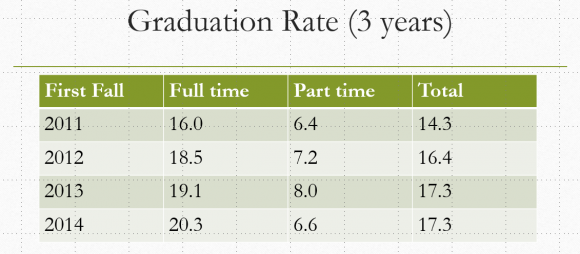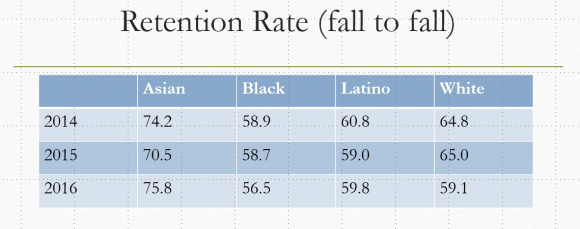In a previous post, I quoted Kevin Gannon:
“When it comes to closing the shameful gaps in college student success, we need to place pedagogy at the center of our efforts” from his commentary in The Chronicle of Higher Education, “The Case for Inclusive Teaching.”
The Gateway Initiative is an effort by BMCC faculty and staff to improve student success by looking at pedagogy, course design, and student supports in courses that students often take in their first or second semesters in college.
It’s part of the college’s strategic plan, and it relates to Goal number two: “improve the student experience.” That goal has several objectives, including a specific one to “improve student outcomes in Gateway courses, including integration of developmental skills.” One of the intended outcomes is to “reduce the DFW rates in targeted Gateway courses.” “DFW” refers to grades D and F that students earn and W is the rate of withdrawal.
So, what are Gateway courses anyway? In the past, you might have heard about them as “gate keeper” courses. These are the courses where the Professor would say to students on the first day, “Look to your left, look to your right, one of these people is not going to be here at the end of the term.” Some saw them as a right of passage, a class so hard only the most “qualified” students could pass them and go on to the next stage of being a major in that field.

The ultimate gatekeeper
However, as the John Gardner Institute puts it: “Perhaps the gateway-course weed-out function was more appropriate in the days when a college or university credential was reserved for a privileged few, or even during the era when a high school credential was more than adequate preparation for work and life in a democratic republic. But we no longer live in those times.”
And at BMCC, we don’t live in that type of institution. Our mission is to teach the students we have, the top 100% of the graduating class of New York City schools. We meet them where they are and we help them get where they want to go.
In this context, Gateway courses are Introductory courses that college students need to pass before they can take other courses in their field, such as Introduction to Business or General Psychology, or beginning courses that all students need to take regardless of major, such as Freshman Composition or Public Speaking.
We also consider developmental courses that prepare students to take college-level courses, such as Intermediate Algebra or Basic Writing, and more generally, large-enrollment classes that are taught via multiple sections with many instructors. These courses serve a large number of students, are pre-requisites to more college courses, and are taught over multiple sections with different teachers.
The top eight courses at BMCC by enrollment are English 101, Speech 100, English 201, Psychology 100, Sociology 100, Math 150, Health Education 100 and Critical Thinking 100 (which is also listed as Philosophy 115).
So why are we doing this? In January, Provost Karrin Wilks shared some data about graduation rates at BMCC. The good news is that they are going up, primarily for fulltime students.

Three year graduation rate
But when you break out the data by ethnicity, you start to get a better picture of what is happening with our students.

Three year graduation rate by ethnicity
Note that the difference in graduation achievement is ten percentage points in some places.
Also, one of the key indicators of success at college is whether students come back, so we look at retention of students from their first fall to the following fall. We have varied success there as well.

Retention by ethnicity
As Provost Wilks said in January, we need to take a design approach to addressing equity issues. That approach begins with acknowledging that “Every program, every service, every policy, every college is perfectly DESIGNED to achieve the EXACT outcome it currently produces.”
We ask faculty engaged in the the Gateway Initiative to take an inquiry approach and a design approach to your classes. Faculty have used a process similar to this:
- Examine success rates for your course and disaggregate the data
- Identify potential barriers to success
- Determine what evidence is available
- Use course design model to reimagine success in the course
We have seen some small changes with individual faculty, and some of those changes have been incorporated by others. We’re beginning to see some course-wide redesign discussions as well.
Recently I was reminded of an important article on pedagogy from 1987, “The Seven Principles of Good Practice in Undergraduate Education,” by Zelda Gamson and Arthur Chickering. (Various versions exist online, this one is clear and easily readable.) This piece synthesized was what believed about good teaching and learning, and it has been reprinted and expanded on a number of times in the following years.
Chickering and Gamson state that “Good practice in undergraduate education:
- Encourages contact between students and faculty
- Develops reciprocity and cooperation among students.
- Encourages active learning.
- Gives prompt feedback.
- Emphasizes time on task.
- Communicates high expectations.
- Respects diverse talents and ways of learning.
I expect another blog post soon on the “Seven Principles” as it relates to community college teaching, so come back soon.


